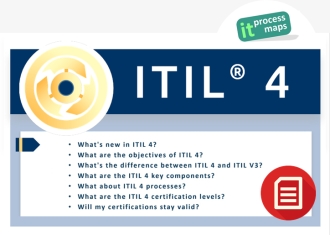Project Management: Difference between revisions
mNo edit summary |
|||
| Line 1: | Line 1: | ||
<seo/> | <seo metakeywords="project management, what is project management" metadescription="In recent years, project management has become more and more important. The reason is that very often for modern enterprises it is vital to ..." /> | ||
<imagemap> | <imagemap> | ||
Image:ITIL-Wiki-de-es.jpg|DE - ES - Project Management|100px | Image:ITIL-Wiki-de-es.jpg|DE - ES - Project Management|100px | ||
| Line 160: | Line 160: | ||
|} | |} | ||
<p> </p> | |||
''' Forward to: ''' | ''' Forward to: ''' | ||
| Line 168: | Line 166: | ||
→ '''[[Project Management - Templates, Checklists and Tips|Templates, checklists and tips for project management]]''' | → '''[[Project Management - Templates, Checklists and Tips|Templates, checklists and tips for project management]]''' | ||
<p> </p> | |||
<html><a rel="author" href="https://profiles.google.com/113316270668629760475"><img style="margin:0px 0px 0px 0px;" src="/skins/Vector/images/itpm/bookmarking/gplus.png" width="16" height="16" title="By: Andrea Kempter | Profile on Google+" alt="Author: Andrea Kempter, IT Process Maps GbR" /></a></html> | |||
<!-- This page is assigned to the following categories: --> | <!-- This page is assigned to the following categories: --> | ||
[[Category:Project Management|!]] | [[Category:Project Management|!]] | ||
<!-- --- --> | <!-- --- --> | ||
Revision as of 16:53, 3 May 2012
<seo metakeywords="project management, what is project management" metadescription="In recent years, project management has become more and more important. The reason is that very often for modern enterprises it is vital to ..." />

What is Project Management?
In recent years, project management has become more and more important. The reason is that very often for modern enterprises it is vital to respond quickly and flexibly to new requirements.
When a business has to address a completely new task it is usually necessary that specialists from very different areas and corporate sectors work together. Here the definition of a project would make sense: It ensures a higher degree of flexibility as it goes beyond day-to-day operations. Project work provides the benefit of finding common solutions rapidly and effectively.
On the other hand, success of the project is not guaranteed, since its content is always new, contrary to business operations which are repetitive and have long been practiced in the company. Even when several approaches have been developed to achieve the project goal, the result is often incalculable.
For these reasons, it is essential to have access to reliable project planning, concrete commitment of the necessary resources and, most important, clear rules for the project work (see: templates, checklists and tips for project management).
All these activities are summarized under the term "project management".
Project management encompasses organization, planning, control and monitoring of all tasks and resources required to achieve the defined project goals and objectives.
Project management is a managerial task and must be distinguished from the practical tasks of the operational project work.
What is a Project?
Frequently, a task is misleadingly classified as a project. As a rule, the following general conditions should be fulfilled for tasks to be completed in the form of a project:
The task
- is unique, i.e. no routine task to be completed as part of the day-to-day operational business,
- is a novelty,
- is subject to constraints by timescale, funding and staff,
- has a complex technical and organizational structure,
- has clear performance targets with regard to the agreed specification and quality,
- is implemented in teamwork, generally by cross-disciplinary and cross-hierarchy project teams.
Successful Implementation of Projects
A project can be considered successful if the output as defined in the project order has been delivered within the scheduled time frame and budgets and with the planned resources.
But careful: Due to the fact that a project is unique and complex, it also bears the risk of not yielding the desired results.
However, the risk of failing can be considerably reduced through rigorous project management ensuring that
- the various people involved act in a co-ordinated way,
- the complexity of the tasks is reduced through structuring,
- the project contents are subdivided into meaningful units to ensure clarity and ease of handling,
- the goals are achieved and
- neither deadlines nor financial limits are exceeded.
Ultimately, very different factors contribute to the success of a project. These factors range from technical issues to organizational agreements and interpersonal aspects.
Project Organization
So as we can see from the above, a project cannot be executed as part of the usual day-to-day business, but has its own rules.
An appropriate project organization helps minimize frictional losses and delays in the project. It serves to
- assign authority, tasks and responsibilities clearly,
- manage the co-operation, communication and co-ordination of all people involved in the project,
- ensure rapid response to changes in the general conditions or the project goals and objectives.
Organizational Structure (Definition of Project Tasks and Responsibilities)
When it comes to multidisciplinary and multi-department teams working together on individual tasks for a limited period of time, it is essential that the organizational structures in the company are flexible, e.g. to allow direct co-operation between specialists. The inclusion of people from different areas of expertise, organizational structures and hierarchical levels raises the issue of clearly defined project responsibilities. Moreover, a rapid flow of information and close communication is required.
When working together on the successful completion of a project, it is therefore necessary to determine right from the beginning who will participate in the project. It must be defined what their respective functions, responsibilities and competencies will be. Likewise, the information flow between the members of the project team must be determined.
Communication within the project team is often taken for granted; people tend to assume that this will function more or less automatically. However, guidelines may be helpful, here too, and may in the long run help to considerably reduce the amount of time which the members of the project team invest in the project.
It has proved useful to define distinct tasks and responsibilities, i.e. project roles in an organizational structure:
- The Executive is the person or group of persons who allocates funding to the project. He is the key decision-maker and is ultimately responsible for the success of the project.
- The Project Board (often referred to as Steering Committee) represents the Executive and, as the highest-level body, is responsible for providing guidance on the overall strategic direction of the project. It makes the most important decisions with regard to the goal and the scope of the project.
- The Project Manager is responsible for the operational management of the project.
- The Project Team is in charge of the technical project work.
Operational Structure (Planning of the Project Structure)
It is proven practice to break down the project cycle into different stages. It is a planning approach that provides the possibility of obtaining measurable interim results during project execution, thus lowering the project risks considerably. Moreover, it is much easier to discuss and decide on the course to be set for the project if data regarding milestone results and deviations from plans are available.
The aim of stage planning is to make the project progress transparent.
Project stages: objectives and tasks
| Overview: Operational Organization of Project Processes Project stages: objectives and tasks | ||
| Project Stage | Objectives | Tasks |
|---|---|---|
| Project Initiation |
|
|
| Project Planning |
|
|
| Project Execution |
|
|
| Project Closure |
|
|
Forward to:
→ Templates, checklists and tips for project management






